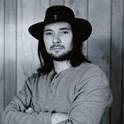
Article
Optical control of electron phase space in plasma accelerators with incoherently stacked laser pulses
Physics of Plasmas
(2015)
Abstract
It is demonstrated that synthesizing an ultrahigh-bandwidth, negatively chirped laser pulse by incoherently stacking pulses of different wavelengths makes it possible to optimize the process of electron self-injection in a dense, highly dispersive plasma (n_0 \sim 10^{19} cm^{-3}). Avoiding transformation of the driving pulse into a relativistic optical shock maintains a quasi-monoenergetic electron spectrum through electron dephasing and boosts electron energy far beyond the limits suggested by existing scaling laws. In addition, evolution of the accelerating bucket in a plasma channel is shown to produce a background-free, tunable train of femtosecond-duration, 35 - 100 kA, time-synchronized quasi-monoenergetic electron bunches. The combination of the negative chirp and the channel permits acceleration of electrons beyond 1 GeV in a 3 mm plasma with 1.4 J of laser pulse energy, thus offering the opportunity of high-repetition-rate operation at manageable average laser power.
Keywords
- Pulse stacking,
- optical shock,
- blowout,
- electron self-injection
Disciplines
Publication Date
Spring May 12, 2015
DOI
10.1063/1.4920962
Citation Information
Serge Y. Kalmykov, Xavier Davoine, Remi Lehe, Agustin F. Lifschitz, et al.. "Optical control of electron phase space in plasma accelerators with incoherently stacked laser pulses" Physics of Plasmas Vol. 22 Iss. 5 (2015) p. 056701 ISSN: 1070-664X Available at: http://works.bepress.com/serguei_kalmykov/43/
